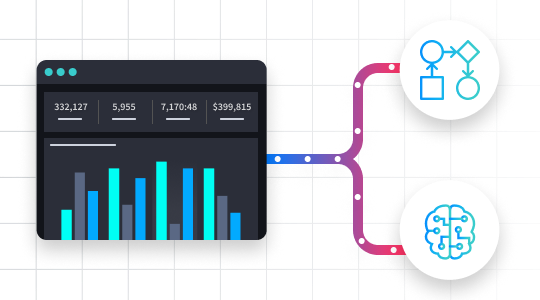6 Critical Cybersecurity Vulnerability Types Your Organization Must Address
Cyber vulnerabilities come in many forms, but six categories pose the greatest risk to most organizations. These include software flaws, network exposures, system misconfigurations, human behavior, cloud security gaps, and third-party weaknesses. Understanding each is essential to building a stronger, more resilient security posture.
Not all vulnerabilities are created equal. Some are hidden deep in your infrastructure, while others walk through the front door in the form of misconfigured systems or unsuspecting employees.
This article breaks down six essential types of vulnerabilities that demand attention from modern security teams. Whether you’re building out a new risk management program or tightening your existing defenses, understanding these categories is the first step toward better resilience.
Vulnerability Examples
Vulnerabilities can appear across nearly every layer of an organization’s digital environment. A missed software update, an exposed API, or a single employee clicking a malicious link can all serve as entry points for attackers. The following examples reflect the most common, and most impactful, types of vulnerabilities security teams must address to reduce risk and improve overall resilience.
1. Software Vulnerabilities
Software vulnerabilities are among the most well-known threats in cybersecurity, often resulting from outdated libraries, coding flaws, or unpatched systems. These weaknesses can be exploited by attackers to gain unauthorized access, inject malicious code, or escalate privileges.
Despite their visibility, software vulnerabilities remain one of the most commonly exploited entry points because many organizations struggle to keep up with patch cycles or inventory of affected assets.
2. Network Vulnerabilities
Network vulnerabilities expose the underlying infrastructure that connects your systems. They can include everything from open ports and weak firewall rules to insecure VPN gateways and unsegmented traffic.
As organizations expand into hybrid and remote-first environments, securing the network layer becomes more complex and more critical. Attackers often scan for these exposures as a first step in broader campaigns.
3. Configuration & System Vulnerabilities
Misconfigurations are often accidental but can have far-reaching consequences. Leaving default credentials in place, exposing administrative interfaces to the public internet, or mismanaging access controls can all create major risks.
These types of vulnerabilities are common across cloud services, endpoint devices, and internal systems, often due to rushed deployments or lack of consistent configuration policies.
4. Human Vulnerabilities (The “People” Factor)
People remain a frequent target for attackers, whether through phishing emails, social engineering, or inadvertent mistakes like sharing passwords or clicking on suspicious links.
These vulnerabilities aren’t rooted in technology but in human behavior, making them harder to detect and even harder to patch. Building a strong security culture through training and awareness is key, but organizations also need responsive processes to triage and contain incidents quickly when they do occur.
5. Cloud Environment Vulnerabilities
As businesses increasingly rely on cloud infrastructure, they inherit a new set of risks. Misconfigured storage buckets, insecure APIs, and overly permissive identity roles are just some of the common pitfalls. Unlike traditional on-prem environments, cloud platforms require continuous oversight, as services evolve rapidly and settings can change without clear visibility.
Without a unified view, gaps in your cloud security posture can go unnoticed until it’s too late.
6. Third-Party & Supply Chain Vulnerabilities
Many organizations rely on dozens or even hundreds of vendors and partners to power their operations. Each one of these relationships introduces potential risk, particularly if third-party tools have access to sensitive data or internal systems.
High-profile breaches in recent years have shown how attackers can compromise a trusted supplier to gain access to much larger targets. Managing these risks requires not just contracts, but real-time assessments and monitoring of external dependencies.
Strengthen Your Defenses Against Cyber Vulnerabilities with Swimlane Turbine
Awareness is the first step, but effective response and remediation are what truly differentiate a resilient organization. The sheer volume and diversity of vulnerabilities can overwhelm even the most capable security teams. This is where AI automation platforms, like Swimlane Turbine, become indispensable.
Swimlane transforms complex, manual vulnerability management into a streamlined, automated process. It centralizes findings from all your tools into a unified view, delivering intelligent, risk-based prioritization powered by AI and threat intelligence.
Instead of chasing every alert, your team can focus on the vulnerabilities that matter most. From triggering patch deployments to generating tickets and enforcing policy, Turbine orchestrates every step of the remediation process, dramatically reducing MTTR and improving operational resilience.
Operationalize Your Vulnerability Strategy with Swimlane VRM
Swimlane Vulnerability Response Management (VRM) brings these capabilities to life through a purpose-built solution available in the Swimlane Marketplace. It equips security teams with the tools they need to act faster, smarter, and with greater precision.
Key VRM capabilities include:
- Risk-based prioritization using CVSS, EPSS, and asset criticality
- AI-augmented responses via Hero AI
- Enrichment from 30+ threat intel sources
- Integrated case management and remediation tracking
- Multi-scanner normalization
- Unified asset inventory visibility
Whether you’re dealing with misconfigurations, software flaws, or third-party risks, Swimlane VRM helps you close the loop on vulnerability response, without the chaos.
Cybersecurity Vulnerability FAQs
What is a vulnerability type?
A vulnerability type is a classification of a security weakness, often based on where it appears (e.g., software, human, network) and how it can be exploited.
What are the 4 main types of vulnerability in cyber security?
The four primary types often referenced in cybersecurity frameworks are human, physical, network, and software vulnerabilities. While this provides a high-level foundation, many organizations now expand this list to reflect risks specific to cloud infrastructure, system misconfiguration, and third-party dependencies.
What are the types of vulnerability assessment?
Vulnerability assessments can take several forms depending on your cybersecurity strategy. These include automated scanning, which helps identify known issues quickly across assets; penetration testing, where ethical hackers attempt to exploit weaknesses; configuration reviews to catch misaligned system settings; and risk-based prioritization efforts that help teams focus on the most impactful threats based on business context.
What are human vulnerabilities in cyber security?
Human vulnerabilities stem from behaviors or decisions that inadvertently introduce risk. These may involve clicking phishing emails, reusing passwords, mishandling sensitive data, or failing to follow security protocols. Because they are rooted in psychology rather than technology, these vulnerabilities are often the hardest to predict, and require both proactive education and reactive controls.
TL;DR: Cyber Security Vulnerability Types
TL;DR: Cybersecurity vulnerabilities fall into six critical categories: software, network, system configuration, human, cloud, and third-party risks. Each type exposes organizations to potential breaches, downtime, and data loss. By understanding and proactively addressing these vulnerabilities, security teams can significantly reduce risk and improve response times.

Vulnerability Response Management Solution Demo
In this demo, Josh Roback, Principal Security Solution Architect, will showcase how Swimlane’s Vulnerability Response Management (VRM) Solution picks up where vulnerability scanners leave off, providing enterprise-level intelligence for real-time action.
Watch the 5-minute demo to discover how Swimlane VRM goes beyond traditional vulnerability management.


